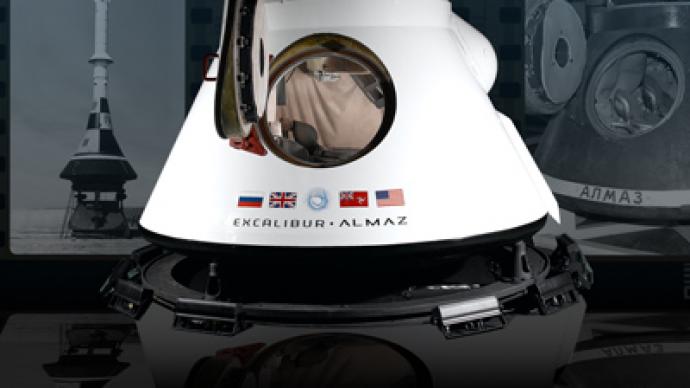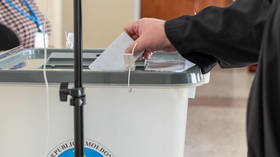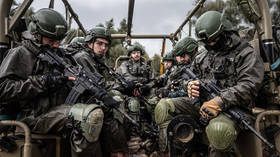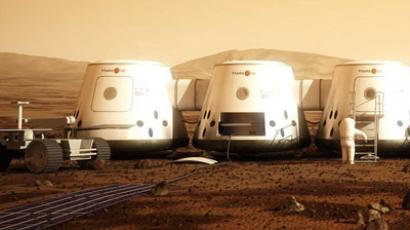US businessman bids for space tourism with Soviet craft

Space tourism will be given a new dimension with plans to blast people to the moon and back in an old, Soviet spacecraft – for £100 million a pop.
US space entrepreneur Art Dula, founder and chief executive of Excalibur Almaz, is planning to send 30 people to the moon and back by 2025 in the first manned moon mission since Apollo 17 in 1972. He has bought two 1970’s-era Soviet space stations and four re-entry capsules from Russia and plans to take his first paying customers to space by 2015. Dula told RT that anybody going with his company into space would not only have to be rich enough, but also must be made of the right stuff physically and psychologically.Although much of the flying will be computer-controlled, all necessary training – including the skills needed to fly the craft – is provided. Dula, who describes himself as a space lawyer, received the first funding for the project seven years ago. He explains that until now his firm has been “flying under the radar” and keeping a low media profile, in order to make sure most of the work was done before going public. “The reason we have a commercial advantage is because of work carried out by the Soviet Union and Russia, which has cheaper and more reliable technology than our competitors,” he told RT. Excalibur has purchased two 30-ton Almaz space stations and four re-entry capsules, each capable of carrying three people to space and back. The Almaz craft, once operated like space stations by the Soviets, can also be used as space vehicles for orbiting the moon and will be blasted into orbit by giant Proton rockets from Russia’s Baikonur Cosmodrome in Kazakhstan.Much of the technical knowledge and expertise has come from the Russian company Mashinostroyenia, which has a long history of building vehicles for space travel. Most of the hardware, including new re-entry vehicles capable of carrying six people rather than the current three, will be built by Mashinostroyenia. Launches and ground-to-space communications during flight will also be handled by Russian staff.Though he is relying on aging Soviet technology to get people into orbit, Dula emphasized the importance of international collaboration in the overall technical realization of the project. A company in Washington will build the boosters that will propel the paying guests to the moon and back once they are in orbit, and Dula has just signed a contract with XCOR Aerospace of California to provide suborbital flight training and familiarization with future crews. NASA and the European company EADS, which owns the Airbus consortium, are also involved and will provide technical know-how to Excalibur. He explained that unlike technology being developed by their competitors, the Excalibur project is using proven Soviet space vehicles which have already clocked up 9 flights into space. The British billionaire Richard Branson is also offering trips into space in his Virgin Galactic craft. It has been in development since 2004, and offers people an up-down experience of brief weightlessness in low orbit rather than Dula’s proposed deep space missions 234,000 miles from earth. Although at $200,000 a trip, Branson’s craft is a lot cheaper. Pat Norris, a space engineer and member of the space group at the Royal Aeronautical Society, believes that as ambitious as it is, the project does stand a good chance of getting off the ground. Norris told RT that there was very little development to do and “they can start flying almost immediately.” Norris explained that some private companies have already successfully sent people into space, and Excalibur “can follow the same rules.” The company Space Adventures has sent seven paying customers up to the International Space Station. Their first client, American businessman Denis Tito, paid $20 million to go to the ISS in 2001. Dula is convinced that national space agencies will become obsolete, and that this is the way space will be explored in the future. “This is a fundamentally new way to explore space, and we’re pioneering it,” he said.














